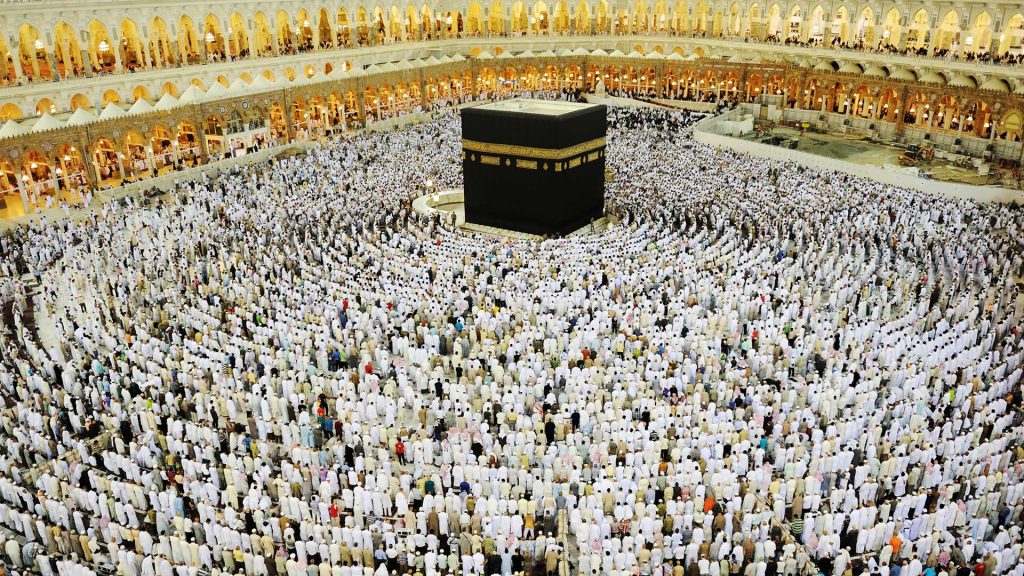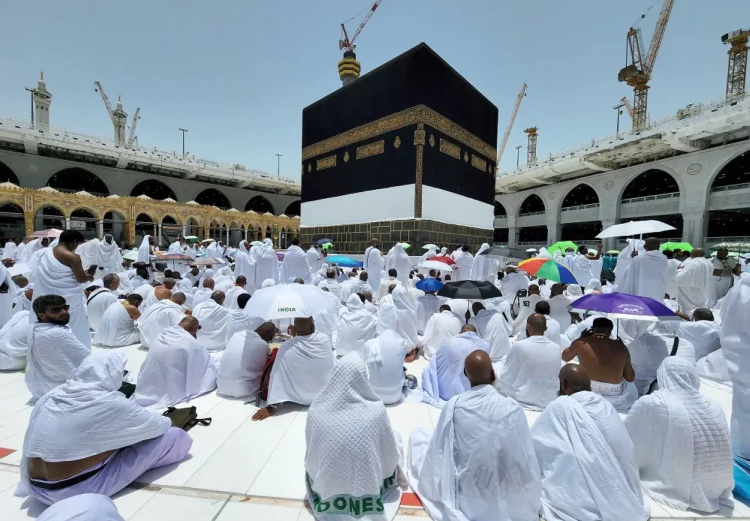Sacred pilgrimages have long been an integral part of various cultures and religions, acting as spiritual journeys that connect individuals to their faith, history, and the divine. These pilgrimages often involve traveling to a sacred site or a location of religious importance, with the journey itself serving as a form of penance, reflection, and devotion. While the destinations may differ, the underlying themes of self-discovery, spiritual awakening, and the quest for inner peace remain universal.
From the holy shrines of Mecca for Muslims to the Himalayas revered by Hindus and Buddhists, pilgrimage routes offer believers a unique opportunity to engage in deep spiritual reflection and connection. They are not just physical journeys, but metaphysical ones, symbolizing a passage from one’s everyday life toward a more profound, spiritual existence.
In this article, we will explore the spiritual significance of sacred pilgrimages, discussing their historical roots, religious contexts, and the transformative power they hold for pilgrims. We will also examine how these journeys continue to shape both personal faith and global cultural exchanges, as well as their enduring importance in a rapidly modernizing world.
1. Pilgrimages as Acts of Faith and Devotion
At the core of any pilgrimage is an act of devotion, where the journey symbolizes the pilgrim’s commitment to their faith and their pursuit of spiritual enlightenment. Pilgrimages are deeply rooted in religious beliefs, with individuals seeking to honor sacred traditions, request blessings, and reflect on their spiritual lives.
For instance, the Hajj pilgrimage to Mecca is a fundamental pillar of Islam. Every able-bodied Muslim who can afford the journey is required to perform the pilgrimage at least once in their lifetime. The experience is seen as an opportunity for spiritual purification, a chance to seek forgiveness for past sins, and a reaffirmation of faith.
In Christianity, pilgrimages to sites such as Jerusalem, the Vatican, and Santiago de Compostela hold similar significance. These sacred routes are seen as journeys of redemption and reconciliation, as pilgrims seek to strengthen their relationship with God through prayer, reflection, and a deeper understanding of Christian teachings.
In the Hindu tradition, pilgrimages to the Char Dham (the four sacred shrines of Badrinath, Dwarka, Puri, and Rameswaram) or the Kumbh Mela are believed to purify the soul and facilitate moksha (liberation from the cycle of life and death). These sacred locations are considered to be divinely blessed, and visiting them is believed to cleanse the pilgrim of sins and bring them closer to the divine.
For Buddhists, the pilgrimage to the Bodh Gaya in India, where the Buddha attained enlightenment, is an essential journey. It symbolizes the quest for wisdom, peace, and the path to nirvana.
2. Pilgrimages as Opportunities for Reflection and Transformation
The significance of pilgrimage lies not only in the destination but in the transformative journey itself. Pilgrims often embark on these sacred journeys to reflect on their lives, seek answers to spiritual questions, or undergo personal growth. The physical challenges of these pilgrimages, such as long walks through rugged terrain, fasting, or praying in solitude, provide an opportunity to overcome personal struggles and gain clarity.
For example, the Camino de Santiago in Spain, which stretches over 500 miles from the French border to Santiago de Compostela, is a journey of personal reflection. Many pilgrims take on the Camino not just as a religious obligation, but as a means to experience spiritual transformation, seeking peace, healing, and self-discovery along the way.
Similarly, the arduous trek to Mount Kailash in Tibet, believed to be the abode of Lord Shiva in Hinduism and Tibetan Buddhism, is considered a journey of spiritual awakening. The act of physically conquering the mountain symbolizes conquering inner demons and the pursuit of ultimate enlightenment.
Many pilgrims find that the journey is just as, if not more, important than the destination. The sense of camaraderie with fellow travelers, the rituals, and the deep introspection required during the pilgrimage often lead to profound personal change and a heightened sense of connection with the divine.

Travel Guide: Pilgrimage Routes You Must Experience
Embarking on a pilgrimage is a powerful experience that offers both spiritual growth and an opportunity to explore some of the world’s most breathtaking landscapes. Here are some of the most revered pilgrimage routes you must experience:
1. The Camino de Santiago, Spain
The Camino de Santiago, or the Way of St. James, is one of the most famous pilgrimage routes in the world. This ancient route, which has been traversed for over 1,000 years, leads pilgrims across northern Spain to the tomb of St. James in Santiago de Compostela. The journey spans various paths, with the most popular route starting in St. Jean Pied de Port in France.
The Camino de Santiago offers not only a spiritual journey but also a chance to explore the rich history, culture, and beauty of Spain’s northern regions. The route takes pilgrims through picturesque villages, rolling vineyards, and lush forests, creating an immersive experience that combines spirituality with nature’s beauty.
2. The Hajj, Saudi Arabia
For Muslims, the Hajj is a once-in-a-lifetime pilgrimage that holds profound religious significance. Pilgrims travel to Mecca in Saudi Arabia to perform a series of rituals that commemorate the actions of the Prophet Ibrahim and his family. The journey involves several days of ritualistic acts, including walking around the Kaaba, standing at Arafat, and symbolically stoning the devil at Mina.
The Hajj pilgrimage is deeply spiritual, bringing Muslims from all over the world together in an experience of unity, faith, and devotion. Pilgrims return from the Hajj spiritually renewed, having experienced the physical and emotional rigors of one of the most significant religious events in the world.
3. Mount Kailash, Tibet
Mount Kailash, located in the remote Tibetan Plateau, is a revered sacred site for Hindus, Buddhists, Jains, and Bonpo practitioners. It is believed that completing the Kailash Mansarovar pilgrimage by circling the mountain (a practice known as Kora) purifies the soul and brings spiritual liberation.
Pilgrims brave the challenging high-altitude trek to make the sacred journey around the mountain, which is considered one of the most sacred places on Earth. The rugged terrain, coupled with the spiritual intensity of the experience, makes this a transformative pilgrimage that offers an unmatched sense of peace and enlightenment.
4. The Kumbh Mela, India
The Kumbh Mela is a major Hindu pilgrimage that takes place every 12 years in four locations across India: Haridwar, Allahabad (Prayagraj), Ujjain, and Nasik. It is the largest religious gathering in the world, with millions of devotees coming together to bathe in the sacred rivers, seeking spiritual purification.
The event is a spectacle of devotion, with pilgrims gathered on the banks of the Ganges River in Haridwar or the Yamuna River in Allahabad, where they take part in rituals believed to cleanse the soul and wash away sins.
5. Bodh Gaya, India
For Buddhists, Bodh Gaya in India is the most important pilgrimage site, as it is the location where the Buddha attained enlightenment under the Bodhi tree. Pilgrims visit the site to meditate, reflect, and experience the spiritual energy of the place. The Mahabodhi Temple in Bodh Gaya is a UNESCO World Heritage Site and an essential stop for Buddhist devotees worldwide.
Information News: Recent Trends in Pilgrimage Tourism
Pilgrimage tourism is on the rise, with more travelers seeking spiritual journeys that offer both personal growth and cultural enrichment. Modern technology, along with the growing interest in wellness and mindfulness, has influenced how pilgrims approach these sacred journeys.
1. Digital Pilgrimages and Virtual Tours
With the rise of digital technology, many pilgrimage sites are offering virtual tours and online experiences. Pilgrims unable to travel due to physical limitations or global circumstances, such as the COVID-19 pandemic, can now take part in virtual pilgrimages. These digital experiences allow pilgrims to visit sacred sites and engage in spiritual practices remotely, offering a taste of the pilgrimage experience without leaving home.
2. Eco-Friendly and Sustainable Pilgrimages
As travelers become more conscious of the environmental impact of tourism, there has been a shift toward eco-friendly pilgrimages. Pilgrims are now seeking ways to reduce their carbon footprint by choosing destinations and routes that promote sustainability. This trend is encouraging pilgrimage organizers to adopt more responsible practices, including eco-friendly accommodations, sustainable transport options, and efforts to protect sacred natural sites from over-tourism.
3. Wellness Pilgrimages
Many modern pilgrims are combining spiritual journeys with wellness tourism. Pilgrimages to sacred sites such as Mount Kailash or Bodh Gaya now include opportunities for mindfulness, meditation, and yoga, allowing travelers to enhance their spiritual practice with a focus on physical and mental well-being. These wellness pilgrimages combine ancient spiritual traditions with contemporary self-care trends, providing an enriching experience for both the body and the soul.
Conclusion
Sacred pilgrimages have always been deeply intertwined with the spiritual fabric of human life. These journeys provide believers with an opportunity to engage in acts of faith, devotion, and reflection, while also serving as transformative experiences that foster personal growth and inner peace. Whether traveling to Mecca, Santiago de Compostela, or Bodh Gaya, pilgrims embark on these routes seeking more than just physical destinations—they are on a quest for spiritual enlightenment and a deeper connection with the divine.
As pilgrimage tourism continues to evolve, trends such as digital pilgrimages, eco-conscious travel, and the fusion of spirituality with wellness offer new ways for modern travelers to engage with these ancient practices. No matter how pilgrimage tourism transforms in the future, the essence of the pilgrimage—the spiritual journey—will continue to remain timeless, offering believers and travelers alike a chance to find meaning and connection in their lives.





















